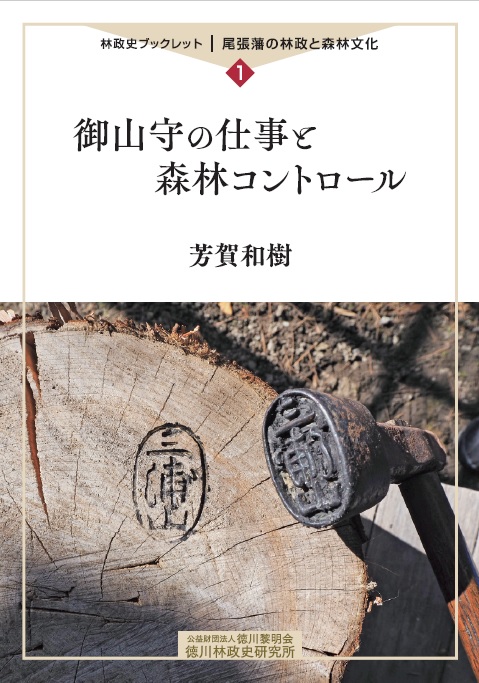
Title
Forest Policy History Booklet: Forest Policy and Forest Culture of the Owari Clan, Vol. 1 Oyamamori no Shigoto to Shinrin Control (The Work of Oyamamori and Forest Control)
Size
89 pages, A5 format
Language
Japanese
Released
March 31, 2020
ISBN
978-4-88604-036-7
Published by
The Tokugawa Institute for the History of Forestry, Tokugawa Reimeikai Public Interest Incorporated Foundation
Book Info
See Book Availability at Library
Japanese Page
This publication provides a history of forest management in Japan during the Edo period (17th–19th centuries). When you hear "the Edo period," you may imagine this as a period from ages ago. However, when you consider the life of a tree, it is a different story. For example, the 300-year-old cypress trees that can be seen today in the Kiso-dani area of Nagano Prefecture and the Kashimo area of Gifu Prefecture first sprouted in the first half of the 18th century.
Incidentally, the 18th century is a crucial period in Japan's history as it pertains to forest management. During the first half of the 17th century, with the dawn of a new era known as the Edo Period (1603–1867), there was a rush to build castle towns and other structures around the country, and demand for building materials increased. Consequently, forests throughout Japan were devastated by over logging, and the latter half of the 17th century saw the shogunate and various other clans adopt a policy of restricting logging to restore the forests. Furthermore, in the 18th century, the shogunate and other clans began to conserve Japan's forests by devising new ways to cultivate and utilize their resources in more artificial ways. Stated differently, the 18th century was a period in which people were more inclined toward the human-directed control of forestry resources than in earlier periods.
This book focuses on the 18th century during Japan's Edo period and introduces and analyzes specific aspects of forest management in practice at the time based on “komonjyo” (ancient documents) preserved by the Naiki family in the Kashimo district of Gifu Prefecture. The Naiki family served as "Oyamamori," a position held by the Owari clan for generations from 1730, and managed forests under the direct control of the clan, called "Oyama" or "Ohayashi." By reviewing the content of these ancient materials retained by the Naiki family, the following characteristics of the Owari clan's forest management practices were revealed:
(1) Trees in good condition were preserved and nurtured by preferentially felling and using trees in poor condition.
(2) Forest areas were rejuvenated by protecting new growth trees that sprouted on the aforementioned logging sites.
(3) More artificial methods, such as sowing seeds and planting saplings, were also adopted.
As described above, the Owari clan was aiming to cultivate the forestry resources for its own purposes, not only by relying on natural forces but also human intervention. In this sense, it can be said that the "conversion of natural resources into artificial resources" advanced in the forests directly under the Owari clan in the 18th century. The "Oyamamori" were at the forefront of these projects.
From this history of the relationship between people and forests in the Edo period, we can understand the current state of forests and gain insights about forest management, potentially leading to solutions to various issues.
(Written by HAGA Kazuki, Assistant Professor, Graduate School of Agricultural and Life Sciences / 2023)
Related Info
2023 Japanese Forest Society Award (The Japanese Forest Society 2023)
https://testsite.forestry.jp/english/



 Find a book
Find a book


 eBook
eBook